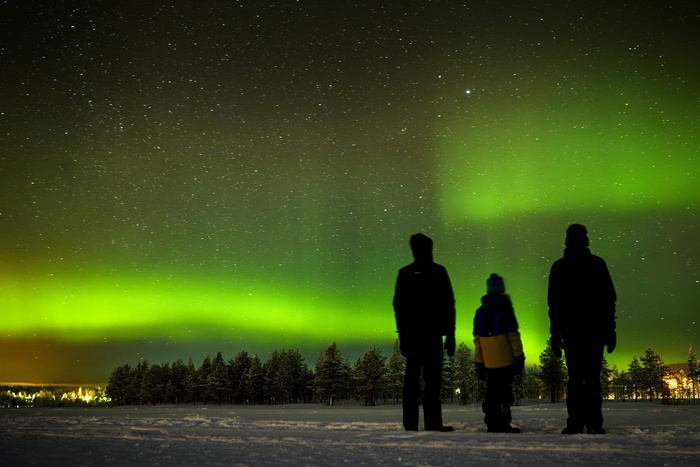From the golden city to a disastrous destination: these are the most lost and mysterious cities in the world
When did you last visit the "Golden City" of El Dorado? Did you know there is a completely deserted Japanese island from residents? And what happened to the fate of the city where the Chernobyl disaster happened? And what about the city where our father Abraham was born? Get to know the 12 most abandoned and mysterious cities in the world that used to be large and popular residential and residential centers
From the golden city to a disastrous destination: these are the most lost and mysterious cities in the world
Photographer: Ziv Reinstein; Video Editor: Maya Ben NissanIn the video - a trip to Petra following Meir Har Zion
Tourists flock to popular ancient towns and villages such as Angkor Wat in Colombia, Machu Picchu in Peru, Red Rock in Petra, Jordan, and the Acropolis of Athens in Greece - but who has recently visited the lost city of "El Dorado"? Or on the abandoned Japanese island "blamed"? And what about the FreiPyat in Ukraine, the city erased in the Chernobyl disaster? Here are some of the most mysterious abandoned urban areas in the world, some of which you might want to plan for a trip soon - and others you might prefer not to get near:
El Dorado: The Lost City of Z - Brazil
If you happened to miss James Gray's movie, "The Lost City Z" from 2017, you're completely not alone. The film fails at the box office and has been severely criticized. Unlike the movie, the hidden golden city that supposedly is somewhere in South America and has never been found - again supposedly - mountains of gold and precious stones. Scholars have been searching for the mythological city since the 16th century. According to the myth, El Dorado was the place where the Incas escaped with their treasures in 1532. In 2010, archaeologists in satellite imagery located promising remains deep in an impenetrable jungle in Mato Grosso, Brazil. They believed it was the remains of an ancient city, perhaps "El Dorado," about which was written in a 1753 Portuguese manuscript "book 512" - which he says found a walled city - reminiscent of ancient Greece - in the depths of the Amazon forest in Mato Grosso. Excavations in the area have not yet begun.
Was "El Dorado" really?
More on:
Drone Documentation: This is what the abandoned Chernobyl looks like after the Nuclear disaster Geologists for the first time lost a continent found 1,600 km below Europe's "Atlantis": The drought in Germany revealed the remains of a lost city Baruch Shaftano: The safest method to get rid of nail fungus From beforeHashem Island - Japan
An abandoned island located about 15 miles from the city of Nagasaki, southern Japan, and is just one of 505 uninhabited islands in the province. The island's salient features are its abandoned concrete structures filled with vegetation - and the city walls surrounding the island. The island served as a site for forced labor before and during World War II. He fled 63 acres and became known for his coal mines. In 1959, it reached the peak of its population with 5,259 residents, in 1974 left its last island and has since been abandoned. The island opened to tourists in 2009 and was approved as a UNESCO World Heritage Site in 2015. The city also served as a backdrop in the 2012 James Bond movie, "Skyfall."
More in Walla! NEWS More in Walla! NEWSTourists flock to the abandoned, polluted city - where the air is so toxic you can die from it
To the full articleHashima Island, Japan (screenshot, wikimedia)
Hashem Island (Photo: Wikipedia, screenshot)
Light - Sophotamia, Iraq
Or was founded in 3800 BC and was the largest and most populous city in the Sumerian empire. Some biblical scholars are convinced that this is light as demons, the birthplace of Abraham our father who left it to the Canaanites - but today many people have no idea that the city actually exists. Once upon a time, some 80,000 people are ruins and the remains of the ziggurat, an ancient and high-rise structure used to worship the moon god Lana in Sumerian mythology.
Light - Sopotamia, Iraq (screenshot, BBC)
Light - Sophotamia, Iraq (Photo: BBC, screenshot)
Some of the buildings that were previously exposed in excavations where they are covered in sand, and it is unknown whether this was done intentionally or whether by the forces of nature. The big ziggurat is still fully exposed and is the only reserved building on the site. Surprisingly, despite the political situation in Iraq, the site is accessible to tourism, but it is primarily aimed at domestic tourism. Since the Iraq War that broke out in 2003, Western tourists have come back to the site, but most of them were coalition forces, coming from a western military base near the site.
Light - Sopotamia, Iraq (screenshot, BBC)
Light - Sophotamia, Iraq (Photo: BBC, screenshot)
Great Zimbabwe: Zimbabwe
South Africa used to be a huge and modern kingdom rich in metalwork and architecture. Greater Zimbabwe served as a home to some 20,000 people and it is believed that the place was inhabited from the first half of the 11th century to the first half of the 15th century. The ruins of the city, found near the city of Masvingo, exhibited "unparalleled architecture in Africa and beyond," as archaeologist Peter Garlac described it. It is not known exactly who built the city - when Portuguese traders first arrived in Zimbabwe in the 15th century, the site was already deserted and in a state of destruction. The sight of the ruins stunned the Portuguese and led them to try to guess who built the buildings. The possibility that native-born Indians did this was rejected outright. Instead, they surmised that they had found the legendary capital of Queen Sheba. Later, European travelers who passed through various hypotheses included the ancient Egyptians, but it is now generally accepted that the site was founded by the people of the Keranga, an ethnic group. Great Zimbabwe has been declared a World Heritage Site since 1986.
Remnants of Great Zimbabwe (Supplier: ShutterStock)
Great Zimbabwean remains (Photo: ShutterStock)
The Furry Cities - Mali
Somewhere, above the Bendyagra cliff in Mali, West Africa, lies a series of deserted cities. These were towns of Telem residents built in the 11th century and mysteriously abandoned in the 16th century. The furrows were dwarfs or "little red people" who built the structures that still look in the area. Today, the Dugon people live in the area.
Furry Towns in Mali (Provider: ShutterStock)
The furry cities in Mali (Photo: ShutterStock)
Chan Chan - Peru
600 years ago, Chan Chan in northern Peru was the largest metropolitan area on the American continent. The city was founded in 850 and its construction continued until its occupation by the Incas in 1470. It is considered the largest pre-Columbian city in South America. It spans 20 square kilometers and has about 30,000 inhabitants. Today, the remains of the place are under threat of another kind - due to climate change and heavy rainfall, mud structures are being demolished - in 1986 UNESCO declared Chan Chan a site World Heritage, and at the same time it has been put on the risk list. UNESCO also recommended not to carry out further archaeological excavations without proper preparation for its protection against winds and rains, causing heavy damage to the mud structures. In 1998, there was concern about the intense rains and floods that accompanied the storms to Nino, but ultimately the damage caused was only minor.
One of the fortresses, Tschundi, is open to visitors, and is a tourist attraction.
Chan Chan, Peru (Supplier: ShutterStock)
Chan Chan, Peru (Photo: ShutterStock)
Colmanscope - Namibia
A ghost town in southwest Namibia, about 15 km east of Lidrich. In the early 20th century, it was a prosperous town of diamond miners. The town produced more than 10 percent of the world's diamonds. Homes, hospitals and schools were established there and the town flourished until the 1930s. Twentieth century, when access to diamonds was easier to find in the south, in the early years of its establishment, it housed some 340 white residents and some 800 workers of Evambo, the town was abandoned in 1954, when the area hospital continued to operate even after the city was abandoned.
Colmenescope in Southwestern Namibia (Supplier: ShutterStock)
Colmenescope in southwest Namibia (Photo: ShutterStock)
In 1956 the city was completely abandoned. The town houses began to crumble and the desert sands penetrated into them. Now there are surrealistic mirrors of houses whose lower floors are covered with sand to a few tens of centimeters, and even more. For most of the year, the city was closed to visitors, as it is located in the Spragbit, the diamond mining area, which is prohibited at the entrance. In 1980, the De Beers Diamond Corporation, which ran the Spragbit, began to rebuild some of the buildings. A museum was erected there, and it was opened to visitors. Unlike other ghost towns in Spragbit, Kolmanskop is close to the city of Lidrich and the B4, making it more accessible. Since the opening of the Colmanscope for visitors, it has become a destination for tourists and photographers.
Colmenescope in Southwestern Namibia (Supplier: ShutterStock)
Colmenescope in southwest Namibia (Photo: ShutterStock)
Tralk - Wills
In the 13th century, Trelek was the second largest town in Wales and had about 400 buildings before it was destroyed, probably from a combination of wars, fires and diseases. The city's discovery was announced in 2017.
Tralk (official site, Philip Halling)
Tralk (Photo: Philip Halling, official website)
Taxila - Pakistan
The university city where Alexander the Great met the sages of India 2,432 years ago. It is a World Heritage site that was destroyed in the 5th or 6th century by the invasion of nomadic tribes. The town was founded in 1000 BC and was abandoned in the 5th century. It is north of modern Islamabad and full of Buddhist stupa (Buddhist buildings) and is in a state of decay.
Taxilla (screenshot)
Taxilla (Photo: screenshot)
Most of the Ancient - Turkmenistan
A number of cultures established settlements in the area and it is thought that during the 12th century it was the largest city in the world. Four fortified cities were established throughout history. In 1999, most ancient was declared a World Heritage Site. The city lies in an oasis of 5,000 square kilometers at the door of the Morgab River, which served as a convenient transportation artery and water source for the settlement. The place was destroyed by Genghis Khan's son in 1221, during a battle in which more than 700,000 people died. Miraculously, the place has not been erased to the ground and ruins can still be seen.
Most of the Ancient (screenshot)
Most of the Ancient (Photo: screenshot)
Prefiat - Ukraine
Another ghost town located in the Kiev region of Ukraine, near the Belarus border. It was founded in 1970 to house the Chernobyl nuclear reactor and became a prosperous city with some 50,000 people, but after the famous Chernobyl disaster in 1986, it was completely evacuated and has been abandoned ever since.
Unlike the neighboring city of Chernobyl, which has been slightly restored since the disaster, Freepiat has remained abandoned and neglected to this day. This is evidenced by the fact that communist propaganda posters still hang around the city to this day. In contrast, the animal world began to thrive precisely after the disaster and the departure of man, despite the heavy pollution. Much vegetation began to grow uninterrupted on the streets of the city, and sometimes even within the houses themselves. The animals also took advantage of human departure; Many species of animals and birds have grown in the area, some of which are rare and others not documented in the area before the disaster.
The city is in a closed area, along with the Chernobyl nuclear power plant and other areas, so its entrance is limited. The city is considered to be polluted and dangerous to a person and there is a prohibition on taking objects from it. However, there are organized tours to Pripiat and the Birthplace, offered by commercial companies. Tourists arrive in organized groups with a guide, and are asked to present certificates upon entering the area, and check the radiation level on their clothing before leaving. A dining room is used by the reactor, which is still used today by the reactor.
Abandoned classroom in a school in the city of Pripyat near the Chernobyl nuclear reactor in Ukraine (GettyImages)
Abandoned classroom in a school in the city of Prefiat near the Chernobyl nuclear reactor in Ukraine (Photo: GettyImages)
Lance or Meadows - Newfoundland, Canada
In 1960, archaeologists discovered remains of human settlement that existed in the site dating back to the 11th century, probably from the Vikings. The site contains objects showing that metalworkers, shipbuilders and woodworkers resided in the historic town. It is the only known Viking settlement in North America and represents the furthest point Europeans have reached in their travels to the New World, ahead of Christopher Columbus and John Cabot (about 500 years before). In 1978, the place was declared a World Heritage Site.
Lance or Meadows (screenshot)
Lance or Madouz (Photo: official website)








